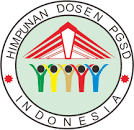- Articles submitted to the Journal should normally be between 4,000 to 6,000 words or maximum 20 pages with single space and should be accompanied by an abstract of not more than 200 words, containing the importance of the topic, the gap between theory and practice or between reality and expectation, or lacks of studies, objectives of the present study, method, findings, and conclusion.
- On the abstract, explicitly write in bold: Introduction, objective of the papers, method, findings, impact and conclusion.
- Below the abstract, about three to five keywords should appear together with the main body of the article with the font size 11.
- The Journal operates a peer review process and promotes blind reviewing. To facilitate this process, author’s names (without academic titles), institutional affiliations, and the email address of the corresponding author should appear only on a detachable cover sheet.
- Contributor(s) should include a short CV describing his/her/their current position and activities in not more than 80 words.
- Articles should be written in Bahasa or English in single space, using Microsoft Word, font size 12, Cambria, top and left margin 3 cm, bottom and right margin 2.54 cm, printed in A4.
- Insert a header on even page indicating name of the Journal, Volume, Number, month, and year, and page number of the publication. On odd page, insert the author(s) and a few words of the title of the articles.
- Footnotes should appear at the end of the text, not at the foot of the relevant page. Page number should be inserted at the bottom, placed on the right.
- Write the main body of the article in two columns.
- Block citation should be 1 cm indented with the font size 11.
- For research-based articles, the outline used is: introduction (without heading or subheading), method, findings and discussion, conclusion, and references.
- The title should be less than 14 words, capitalized, centered, with font size 14.
- The introduction should consist of the background of the study, research contexts, literary review, and research objective. All introduction should be presented in the forms of paragraphs, not pointers, with the proportion of 15-20% of the whole article length.
- The method section consists of description concerning the research design, data sources, data collection, and data analysis with the proportion of 10-15% of the total article length, all presented in the form of paragraphs.
- The findings and discussion section consist of description of the results of the data analysis to answer the research question(s) and their meanings seen from current theories and references of the area addressed. The proportion of this section is 40-60% of the total article length.
- The conclusion section consists of the summary, restatement of the main findings.
- Use only horizontal lines when using tables. Put table number and the title of the table on top of it.
- Every source cited in the body of the article should appear in the reference, and all sources appearing in the reference should be cited in the body of the article.
- The sources cited should at least 80% come from those published in the last 10 years. The sources cited are primary sources in the forms of journal articles, books, and research reports, including theses and dissertations. Citations from journal should be at least 50% of the total references cited.
- Citation is done using bracket (last name and year of publication). When the sources are cited verbatim, page number is included (p. 78 or pp. 78-89 or hlm. 78-79).
- Proofs will be sent to the author for correction, and should be returned to eduhumaniora@upi.edu by the deadline given.
- Quotation and references follows APA style and the latter should be included at the end of the article in the following examples:
Amalia, A. (2012). The use of video in teaching writing procedural text: A quasi-experimental study in one of Senior High Schools in Bandung (Skripsi, Universitas Pendidikan Indonesia, 2012). Retrieved 12th January, 2012 from http://repository.upi.edu/skripsiview.php?no_skripsi=11587
Balitbang. (2008). The assessment of curriculum policies in secondary education: Assessment report. Jakarta: Badan Penelitian dan Pengembangan.
Costner, K. (Director), & Blake, M. (Writer). (1990). Dances With Wolves [Motion picture]. United States: Majestic Film/Tig Productions.
Cox, C. (1999). Teaching language arts: A student-and response-centered classroom (3th ed.). Needam Heights, MA: Allyn & Bacon.
Cramond, B. (2007). Enriching the brain? Probably not for psychologists [Review of the book Enriching the brain: How to maximize every learner’s potential]. PsycCRITIQUES, 52(4), Article 2. Retrieved from http://www.apa.org/psyccritiques/
Dorland’s illustrated medical dictionary (29th ed.). (2000). Philadelphia: Saunders.
Hunston, S. & Oakey, D. (2010). Introducing applied linguistics: Concepts and skills. New York, NY: Routledge.
Johnson, L., Lewis, K., Peters, M., Harris, Y., Moreton, G., Morgan, B. et al. (2005). How far is far? London: McMillan.
Palmer, R. (in press). A third way: online labs integrated with print materials. Indonesian Journal of Applied Linguistics.
Sklair, L. (2010). Iconic Architecture and the Culture-ideology of Consumerism. Theory Culture Society, 27(135), pp. 135-159. DOI: 10.1177/0263276410374634.
Suherdi, D. (2010). Week three: Analyzing structure [Powerpoint slides]. Unpublished manuscript, IG502, Universitas Pendidikan Indonesia, Bandung, Indonesia
Sukyadi, D. & Mardiani, R. (2011b). The washback effect of national examination (ENE) on English teachers’ classroom teaching and students’ learning. K@ta: A Biannual Publication on the Study of Language and Literature, 13(1), pp. 96-111.
Sukyadi, D. (2011). The metaphorical use of English address terms in Indonesian blog comments (A pragmatic analysis of Indonesian bloggers). Dalam Nasanius, Y. (ed.) Conference on English Studies (CONEST) 8, pp. 133-135, Jakarta: Unika Atma Jaya.
Waugh, L.R., & Monville-Burston, M. (eds.). (1990). On language: Roman Jakobson. Cambridge, MA: Harvard University Press.

_page-0001-min.jpg)






.png)

